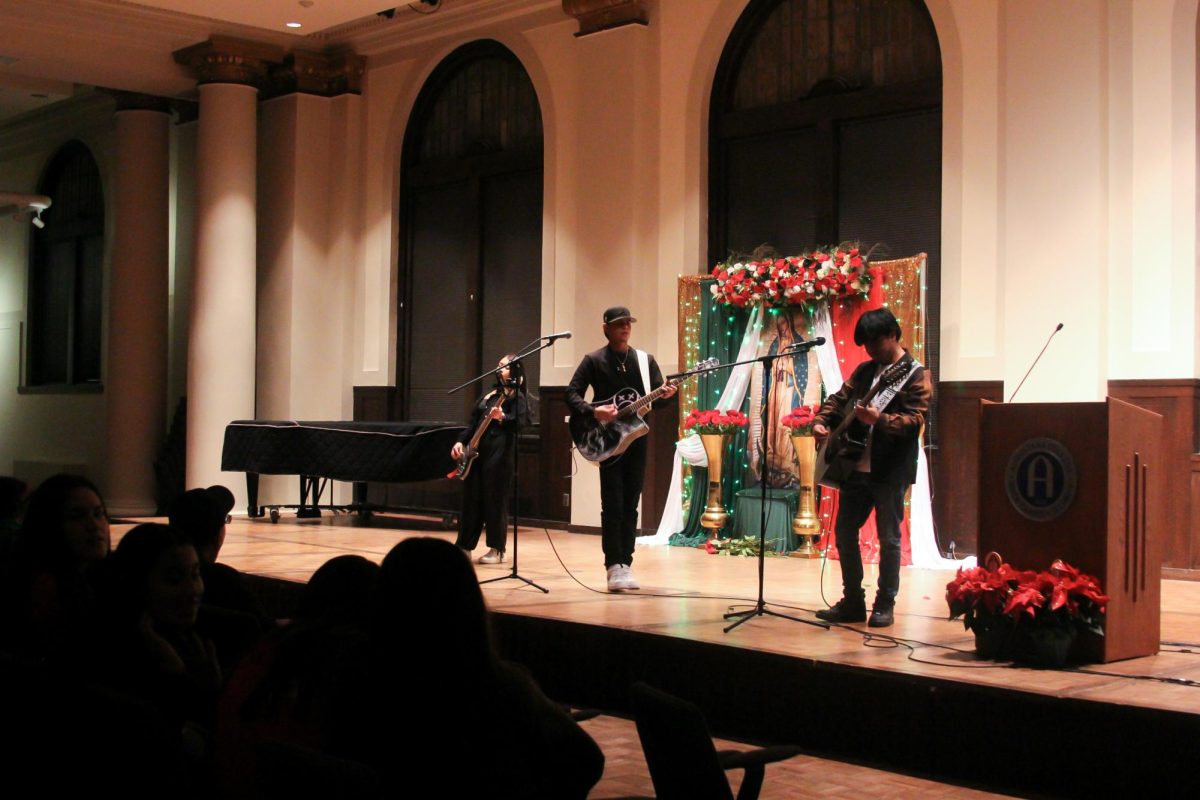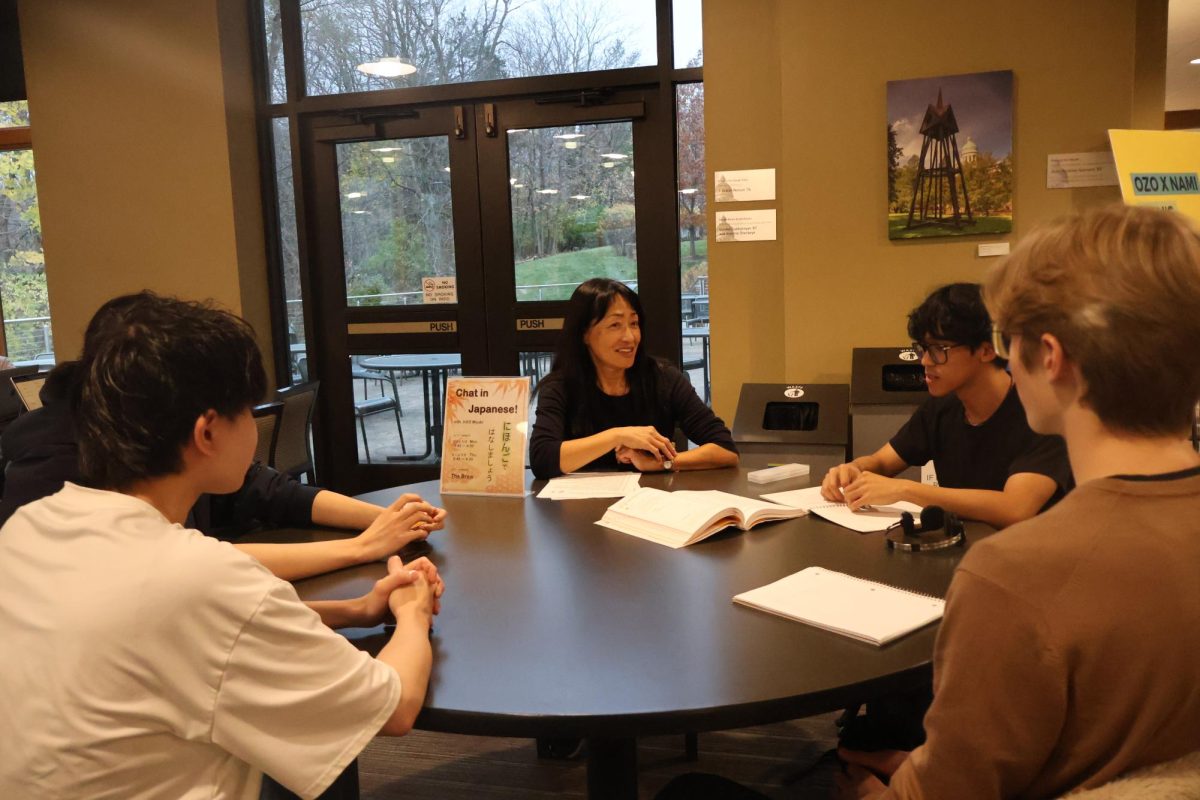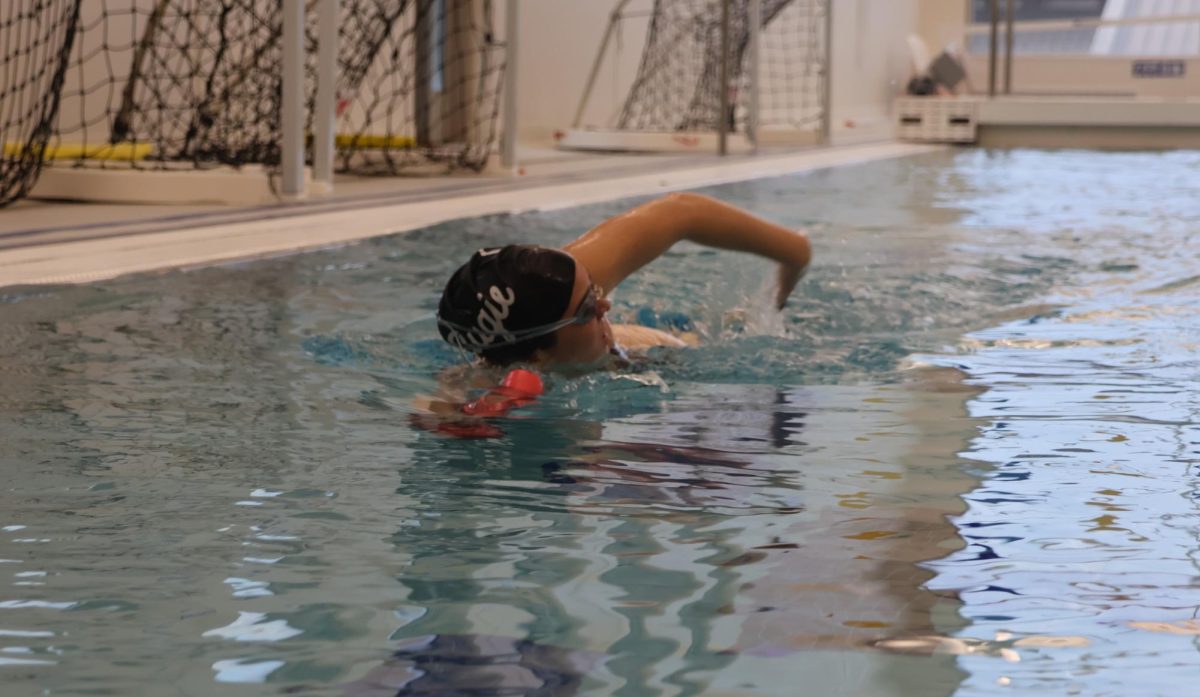The Figge Art Museum recently completed their eighth annual college invitational. Hosting a vast variety of different students schools and their work, it was very interesting to see the talent and flavor that young artists produce currently.
The invitational included Augustana students, such as Cam Best’s charcoal painting “Salute.” “Salute” is best described as transparent yet bold with her message criticizing anti privacy and military surveillance by sketching a skeleton with a gatling gun, ammo belt and a video camera, representing what humans have allowed themselves to become.
Among other charcoal works was Holly Scholl’s “A Crimson Pause,” portraying the power that anticipation can have on an audience. Scholl utilized red colors with blacks to create an ominous feeling. There were other styles of works as well, such Emily Grooms’s “Canopic Jars” resembling Egyptian pottery through B clay. They could easily pass as the real deal.
While the invitational is now over, visitors can find interesting exhibits elsewhere. One of the closest exhibits to the entrance, next to the elevator, displays the A Model Client: Frank Lloyd Wright Designs for SC Johnson & Son. The fact that Frank Lloyd Wright designed such elaborate complexes here in the Quad Cities is a little know fact.
The smaller yet intriguing exhibit thoroughly covers and portrays the original nature of Wright’s creations. From pictures, to factual texts, to a large-scaled model of his building design, this is definitely a must-see not only for artists but those interested in in architecture.
“Mississippi River Views” from the Muscatine Art Center Collection is another cool display of a variety of paintings dedicated to the Mississippi River. River views of Davenport and Rock Island, along with other cities, are prominently displayed through a vast amount of different styles of artistic works.
A personal favorite was the Burlington Am Mississippi. Created in 1855, it is a hand-colored steel engraving. While it is imperfect for still having some white spots, the amount of detail in it is stunning considering its size.
Another particularly striking work is the “The Clinton Night Loading on the Mississippi River.” Also a painted 1800s piece, its oil is primarily used to create a dark plane. By doing so, it makes the smaller samples of bright colors valuable to the eye. This conveys a message of man versus nature that was wide-spread during the Industrial Revolution.
Though art may seem like an enticing Saturday afternoon activity to most college-goers, the Figge has some wonderful exhibits that demonstrate the visual history of the Quad Cities. Admission is free with your student ID.





































































































